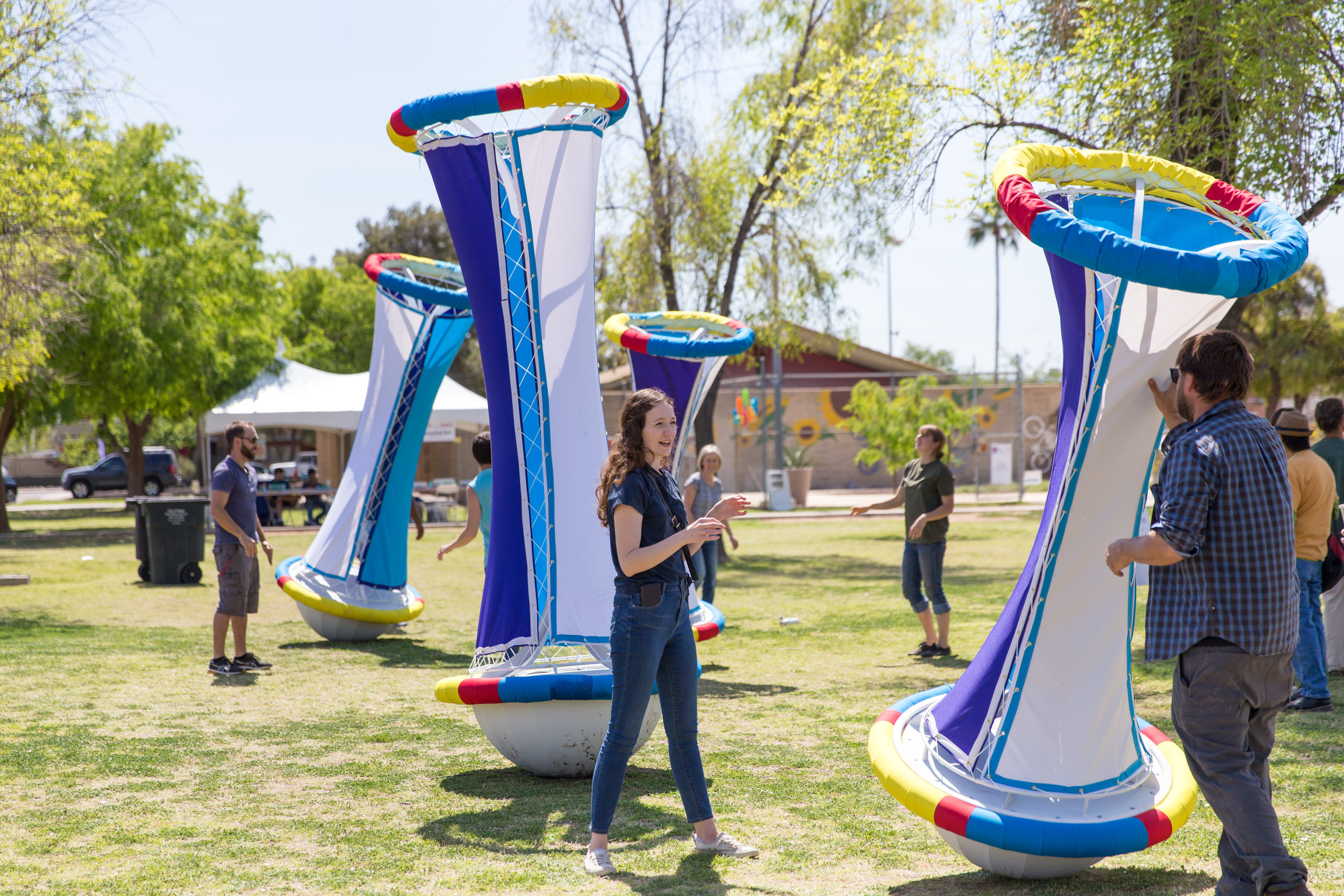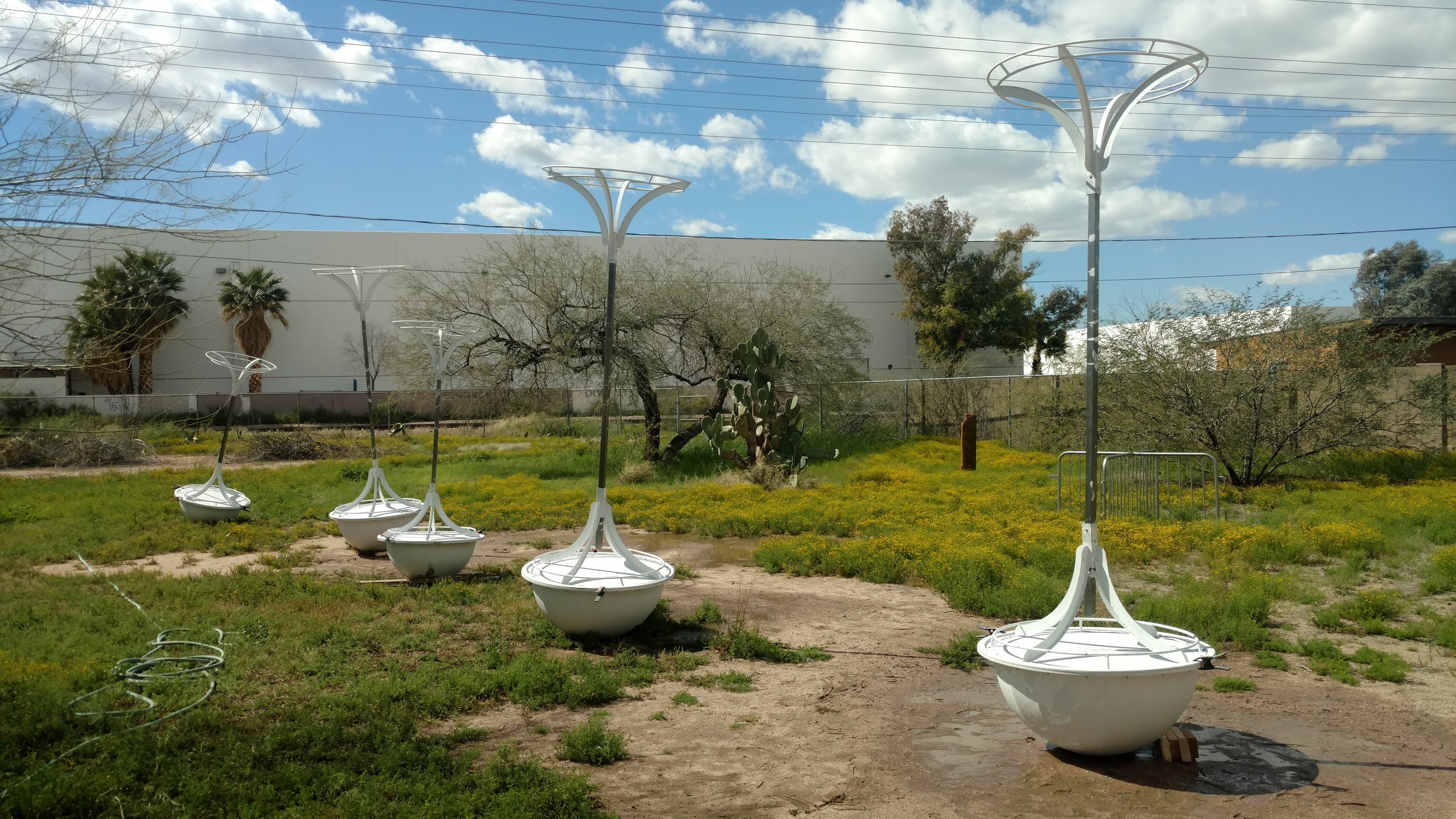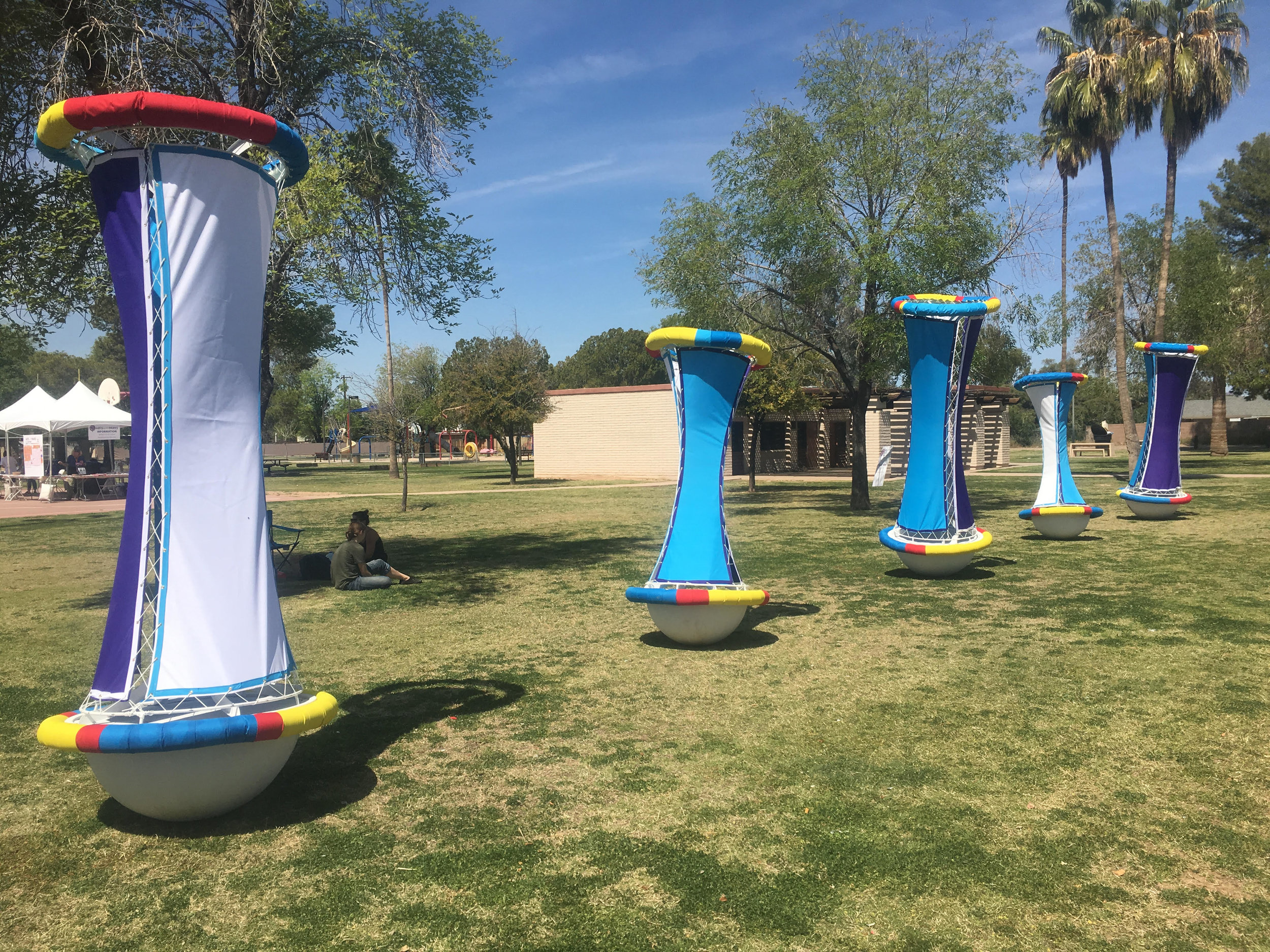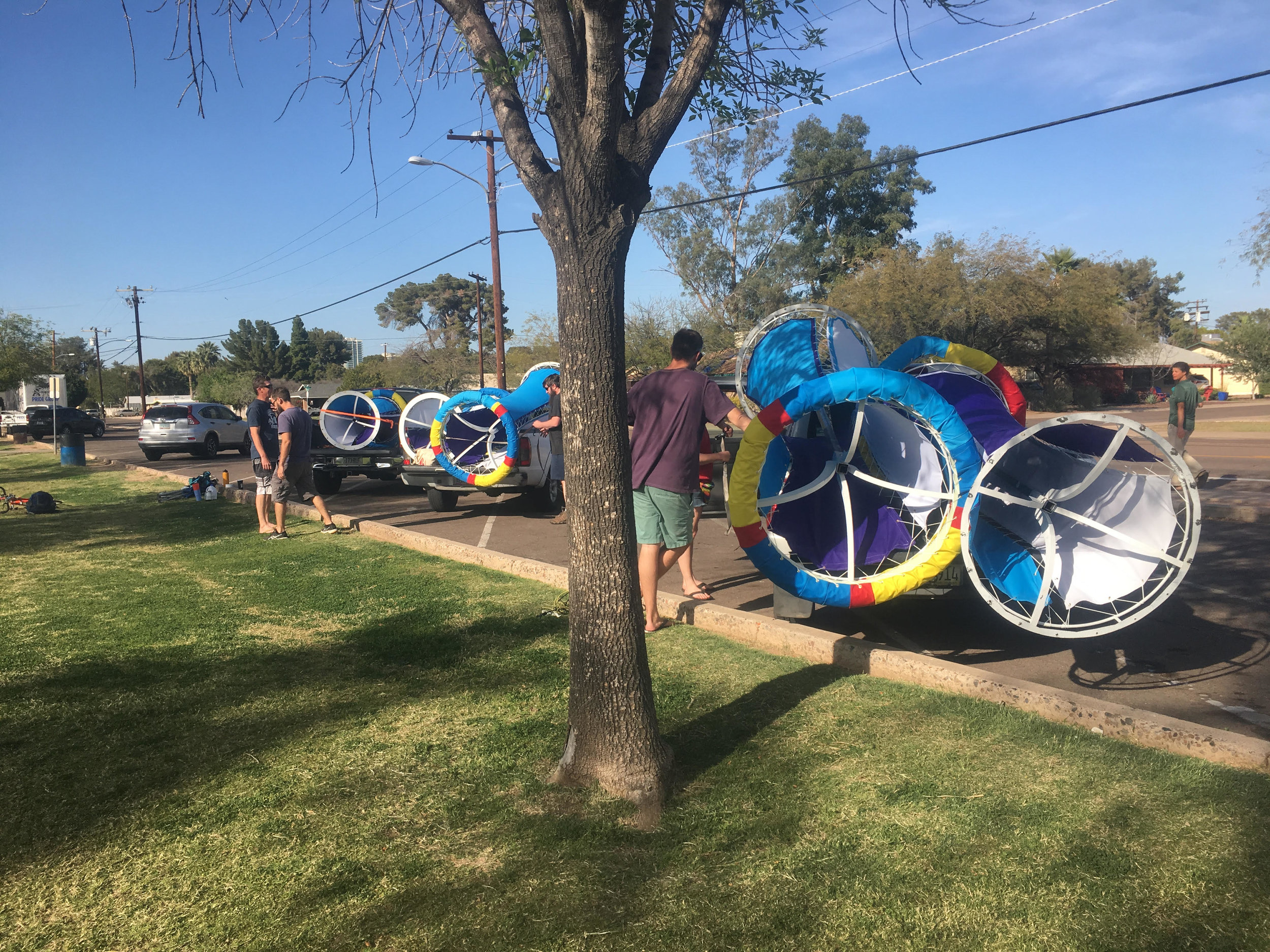







Thwimp Thwomp
In 2015, I put together a project called Shifting Sand Land for the Scottsdale Arts Festival. It was a 50-foot diameter game of “Can’t Touch the Ground”, a game of balance and cooperation, one that manipulated the participants’ center of gravity. Playing off these ideas of interaction as well as the physical construction techniques, I designed Thwimp Thwomp for Clark Park.
Visually, Thwimp Thwomp is a large, colorful game about physical movement and spatial awareness. Physically, Thwimp Thwomp is a set of five giant weeble wobbles, occupies a section of the park. Each weeble will stands 8 to 10 feet tall so that they will have an imposing mass while maintaining a familiar scale. However, the project provides an unfamiliar environment, one where architecture is in constant movement, a place where the walls move and the sky is falling.
Each sculpture is a stretched fabric skin, over a lightweight skeleton, situated on a hemispherical base. Upholstered bumpers will be placed just above the base and at the top of the structure. Using these soft materials will be necessary for ensuring safety, while the geometry of the lower bumper will make it impossible to tip over the sculptures.
Each weeble is designed and fabricated modularly; comprised of a water filled base and a light-weight sculptural component. As with Shifting Sand Land, the water is a counterweight to stabilize each weeble. With this design only a hose, some assembly, and no heavy lifting will be required for installation. The curb will also be made in a modular fashion. Grass is going to be the ideal ground material; the softness of material ground cover actually has a slowing affect on this kind of structure and provides a soft ground for players, increasing the fun and implicit value of the work.
It is integral to my artistic practice that the audience has an opportunity to become immersed in and interact with the sculptures and sculptural spaces that I build. Being a large, colorful-tactile installation, Thwimp Thwomp will undoubtedly draw the attention of anyone who sees it; taking on the role of an architectural intervention, and conceptually connecting ‘high art’, architecture, playgrounds and participatory installations. .
